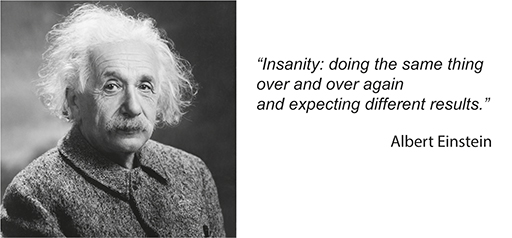1 Learning from the past

When designing a techno-pedagogical innovation, there are two things to avoid: reinventing wheels and repeating mistakes. In other words, you want to learn from relevant examples of past innovations and apply the aggregated knowledge encapsulated in theoretical frameworks. Now you’re ready to take the first step towards devising an innovative assessment. That first step will be to ask:
- Is there a problem I am currently facing where the normal method of assessment is problematic? (This problem could be that the learners are in a remote location or the planned method of assessment prevent the learners from demonstrating a variety of skills and learning outcomes)
- What is problematic about how I plan to judge the learning outcomes that the learner will evidence?
- Would an alternative assessment help the learners to demonstrate a wider variety of skills and/or demonstrate the achievement of learning outcomes?
- How have other innovators attempted to address similar challenges in similar contexts, and what can I learn from these attempts?
With these questions in mind, now complete Activities 1 and 2.
Activity 1 Case study
At this stage you will have identified a problem or challenge relating to the assessment of learning outcomes that you want to overcome. The next stage is to research how others have assessed similar topic areas.
Use Google Scholar or search the internet or, if you have access, the academic literature in an e-library for a case study of a techno-pedagogical innovation that might provide possible ways to resolve your challenge. You could also draw upon some of the examples you have seen in Weeks 1 and 2.
Write a summary of the case study you are reviewing. Your summary should use the structure of a design narrative as defined in the STARR template (you can use the template provided):
- STARR (Word template) [Tip: hold Ctrl and click a link to open it in a new tab. (Hide tip)]
Activity 2 Design patterns
One popular form for capturing compact blocks of design knowledge is design patterns (Goodyear, 2005; Mor and Winters, 2007). A design pattern describes a recurring problem, or design challenge, the characteristics of the context in which it occurs, and a possible method for solving the problem. Christopher Alexander, who conceived design patterns as a design language for architecture and urban planning, states:
Each pattern describes a problem that occurs over and over again in our environment, and then describes the core of the solution to that problem, in such a way that you can use this solution a million times over, without ever doing it the same way twice.
At its core, a pattern has three parts:
- a problem statement
- a context description
- a recipe for a solution.
Building upon your research from Activity 1 you should have completed the three parts of the design pattern above. The next stage is to move this design pattern onto a written format. Review the resources below to see some examples of patterns and pattern collections and then note down your design pattern in the box below or on a piece of paper. You should open the links in a new tab or window by holding down Ctrl (or Cmd on a Mac) when clicking on it. You can find more examples online.
Resources
Design patterns
Pachler et al. (2009) include ten design patterns for formative e-assessment.
Visually appealing examples from other fields are available at UI Patterns and Interface Design Patterns.
Design principles
The Design Principles Database is designed to bridge research and design in a communicable and systematic manner, by providing learning designers with a space to publish, connect, discuss and review design ideas.
Herrington et al. (2009) offer eleven design principles for mobile learning.
Moreno and Mayer (2000) propose eight principles for designing multimedia explanations. (Note: in this copy of the paper the two shockwave files the paper links to do not appear to be available. However, this does not detract from the paper itself.)
